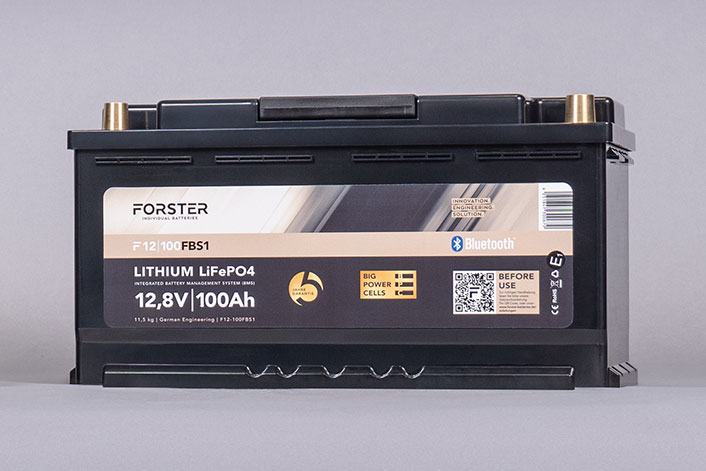Lithium battery - ideal for camping & leisure


Would you like to know what's behind the hype surrounding lithium batteries? Are they really the silver bullet of battery technology? In this blog post, we uncover the facts and explain everything you need to know about lithium batteries. From the technical basics to the unique advantages and the ideal areas of application - find out here!
You can also watch the corresponding video here:

Lithium batteries, or more precisely lithium-ion batteries, are a relatively new technology in the field of energy storage. They differ fundamentally from the classic lead-acid batteries that we have used in vehicles and other applications to date.
The main difference lies in the chemical structure: lithium batteries use lithium ions that move between a positive and a negative electrode to generate electrical energy. This process is significantly more efficient and enables a higher energy density than lead-acid batteries.
Lithium batteries have a higher cell voltage (3.2 volts per cell) than lead-acid batteries (2.2 volts per cell). To achieve the desired voltage, several cells are connected in series.
A battery management system (BMS) monitors and controls the state of charge and temperature of the individual cells to ensure optimum performance and safety.

Lithium batteries offer a number of advantages that make them attractive for many applications:
Lithium batteries store significantly more energy than lead-acid batteries of the same weight or size. If you take the service life and depth of discharge (i.e. actual capacity) into account, lithium is sometimes even the cheaper battery. To cover the same power requirement with GEL or AGM batteries, you would need at least two of each. This makes them ideal for applications where weight and space play a role, such as in electric vehicles, motorcycles or motorhomes.
Lithium batteries are significantly lighter than comparable lead-acid batteries. This means you save weight, which in turn saves fuel. With the same capacity, up to 75 % less space and weight can be saved. Or: Twice as much capacity can be accommodated in the same space. The lithium battery has the highest energy density of all possible batteries in a motorhome.
Lithium batteries have a high cycle stability (approx. 5,000 cycles at 50% depth of discharge) and can be charged and discharged much more frequently than lead-acid batteries. This means a longer service life and lower costs in the long term.
Lithium batteries can be charged faster than lead-acid batteries. This saves time and increases flexibility.
The following applies here: Empty is really empty and full is really full. Like a glass of water, the lithium battery can be discharged and recharged 100% - unlike lead-acid batteries. And in principle it charges in exactly the same way, continuously, until it is full. There is no memory effect, i.e. you can recharge at any time when it suits you.
Lithium batteries have a low self-discharge rate and lose very little capacity even when stored for long periods.

Lithium batteries are versatile and are conquering more and more areas of application:
Lithium batteries are ideal for motorhomes, boats and other leisure vehicles. They provide a reliable and long-lasting power supply for lighting, electronics and other consumers.
Lithium batteries are increasingly being used as stationary energy storage systems in households and businesses. They store surplus energy from solar systems or the power grid and make it available when needed.
Lithium batteries are also used in motorcycles, especially in custom bikes and racing bikes. Here they score points with their low weight and high performance.

Despite their many advantages, lithium batteries are not the best choice for every application:
For applications with very high starting currents, such as in large diesel engines, lead-acid batteries are often better suited as they can deliver the high current more quickly. Exception: Our Forster Premium Starter by intAct series with specially developed high-current pouch cells are particularly resistant to the high temperatures in the engine compartment. Provides enormous weight savings and full installation flexibility for up to 100,000 starts.
Lithium batteries are sensitive to extreme temperatures, especially cold. Performance and service life can be impaired at low temperatures.
Lithium batteries are generally more expensive than comparable lead-acid batteries. However, the advantages, such as the lower weight and longer service life, should not be ignored when making a purchase decision.

Lithium batteries are a pioneering technology that is revolutionizing energy storage in many areas. Their high energy density, low weight, long service life and fast charging make them an attractive choice for many applications.